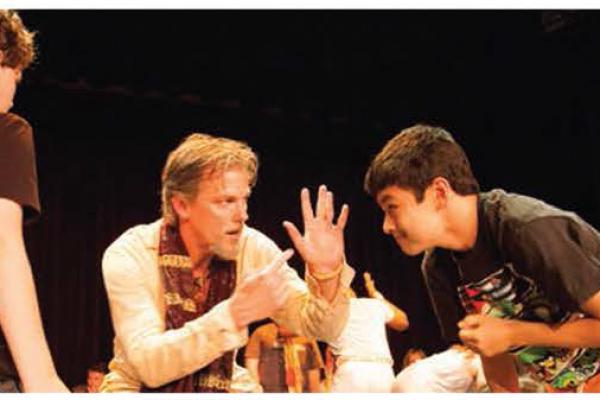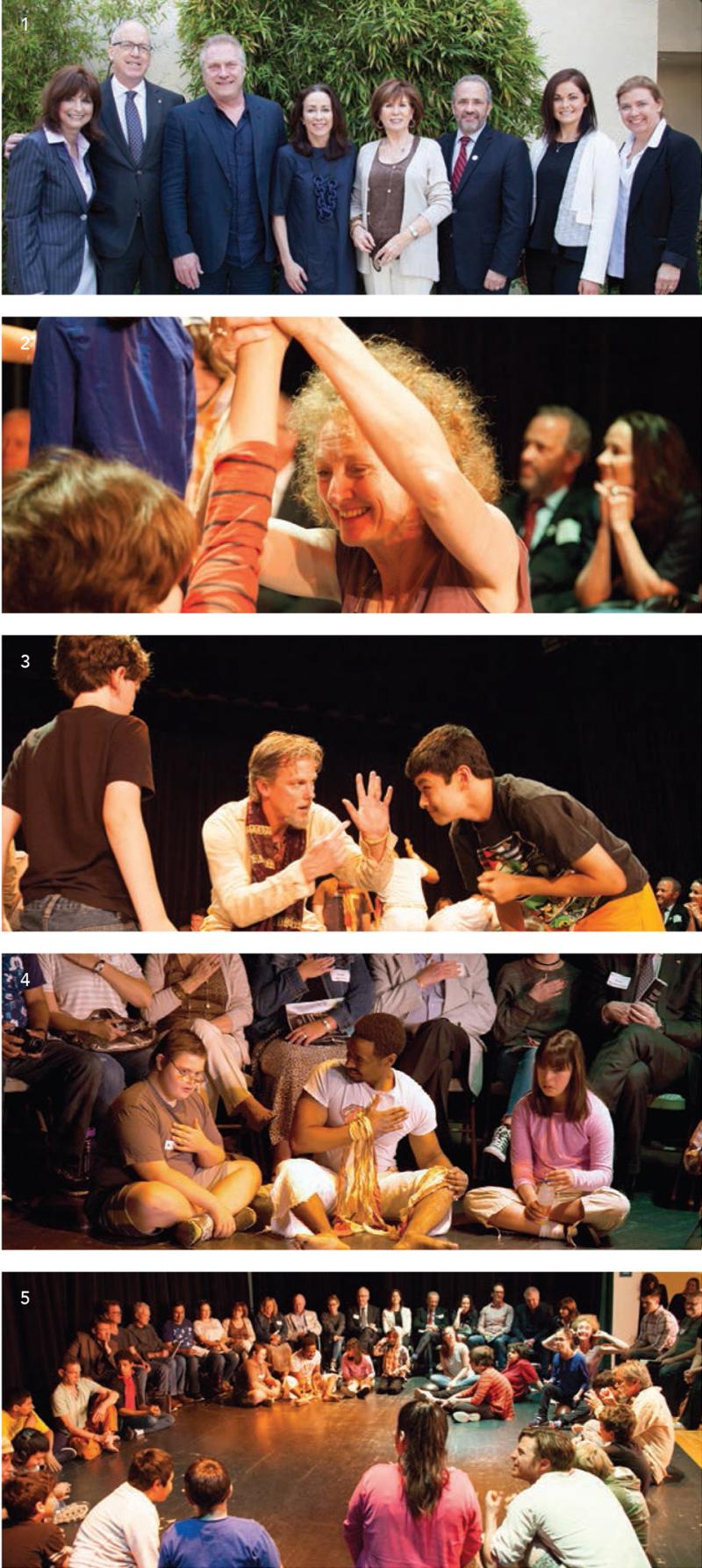September 2, 2016
THE SHAKESPEARE AND AUTISM PROJECT MAKES ITS L.A. DEBUT AT THE HELP GROUP

A groundbreaking initiative, The Shakespeare and Autism Project made its Los Angeles debut at The Help Group on Friday, May 13 and Saturday, May 14 at the state-of-the-art Autism Center Theater. Presented by The Ohio State University Department of Theatre with Kelly Hunter and the Flute Theater, 15 students from The Help Group's Bridgeport School were invited to take part in these unique and interactive performances of Shakespeare's The Tempest.
"At The Help Group, we're deeply committed to performing arts and believe that all arts provide pathways to self-expression, self-discovery, creativity and self-esteem for our young people," expressed Dr. Barbara Firestone in her welcome remarks to Help Group parents and Ohio State administration and alumni. "We are delighted that our children have the opportunity to take part in this dynamic and engaging production of The Tempest.
Students participated on stage with the project's teaching artists in this highly specialized, education-meets-theater concept. "I started using the rhythm of the heartbeat based in Shakespeare's iambic pentameter, and then role playing the characters with very simple games that are short, fun and repeatable," explains Kelly Hunter, a professional actress and emeritus member of the Royal Shakespeare Company who developed the "Hunter Heartbeat Method," which became the foundation of the project. "The idea was for children to experience the theater, form the habit of playing imaginatively, and to most of all enjoy themselves."
In collaboration with the university's Nisonger Center, Dr. Marc Tasse, the center's director, and his doctoral students are conducting research to see how the impact of this program helps children with autism over time. The study is based on the "Hunter Heartbeat Method" and accompanying theater-based games as intervention for children with autism. Dr. Tasse says that researchers have noticed significant improvements in social communication, peer relations and adaptation skills. Lead doctoral student Margaret Mehling, in attendance with Dr. Tasse for the performance and post-performance discussion, explained, "We've seen major improvements in social and facial motion recognition after following the program for a 42-week study that engaged children across five schools and learning centers."
Kevin McClatchy, director, Shakespeare and Autism Project at the university Department of Theater, and one of the teaching artists shared, "The games are constructed in a way that challenge some of the things that children with autism confront. Through the hour twentyminutes of the performance you see the transformative experience that allows the children with autism to connect. It's a gift to be able to do this work. I get as much from the children as they might get from me."
These special performances were made possible by the Patricia HeatonHunt and David Hunt Shakespeare and Autism Fund.
We greatly appreciate The Ohio State University Department of Theatre with Kelly Hunter and the Flute Theater, and all of the teaching artists, Kevin McClatchy, Mahmoud Osman, Robin Post, Gregory Hicks, Chris MacDonald, and Eva Tausig who performed with our students. Our heartfelt thanks for bringing this wonderful program to the children of The Help Group.

1. Dr. Barbara Firestone, David Manderscheid, OSU Dean of the College of Arts and Sciences,
David Hunt, Patricia Heaton-Hunt, Susan Berk, Help Group Board Member, Dr. Marc Tasse,
Margaret Mehling, Janet Parrott, Chair, OSU Department of Theater 2. Kelly Hunter, creator
of the "Hunter Heartbeat Method" 3. Kevin McClatchy, Director, Shakespeare and Autism
Project 4. Teaching artist Mahmoud Osman demonstrating the Hunter Heartbeat Method
5. Within the intimate setting of the "Heartbeat Circle" the actors invite the children to join
them, playing sensory games to bring the story The Tempest to life
